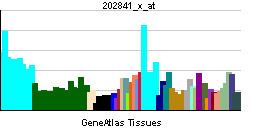Aliases OGFR, OGFr Ensembl ENSG00000060491 | Entrez 11054 | |
 | ||
External IDs MGI: 1919325 HomoloGene: 7199 GeneCards: OGFR | ||
Opioid growth factor receptor, also known as OGFr or the ζ-opioid receptor, is a protein which in humans is encoded by the OGFR gene. The protein encoded by this gene is a receptor for opioid growth factor (OGF), also known as [Met(5)]-enkephalin. The endogenous ligand is thus a known opioid peptide, and OGFr was originally discovered and named as a new opioid receptor zeta (ζ). However it was subsequently found that it shares little sequence similarity with the other opioid receptors, and has quite different function.
Contents
Function
The natural function of this receptor appears to be in regulation of tissue growth, and it has been shown to be important in embryonic development, wound repair, and certain forms of cancer.
OGF is a negative regulator of cell proliferation and tissue organization in a variety of processes. The encoded unbound receptor for OGF has been localized to the outer nuclear envelope, where it binds OGF and is translocated into the nucleus. The coding sequence of this gene contains a polymorphic region of 60 nt tandem imperfect repeat units. Several transcripts containing between zero and eight repeat units have been reported.
Therapeutic applications
Upregulation of OGFr and consequent stimulation of the OGF-OGFr system are important for the anti-proliferative effects of imidazoquinoline drugs like imiquimod and resiquimod, which are immune response modifiers with potent antiviral and antitumour effects, used as topical creams for the treatment of skin cancers and warts.
Structure
OGF contains a conserved N-terminal domain followed by a series of imperfect repeats.
